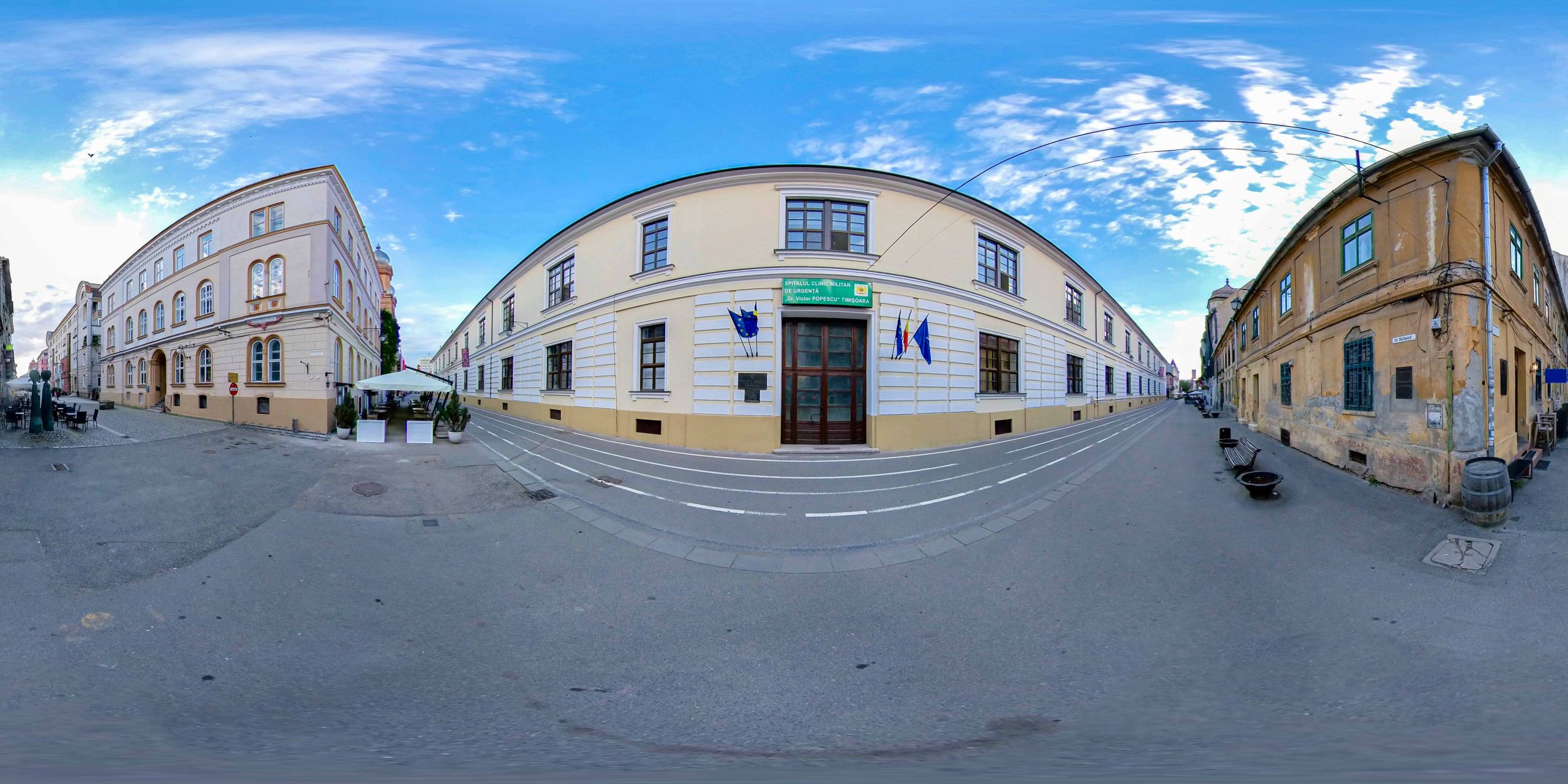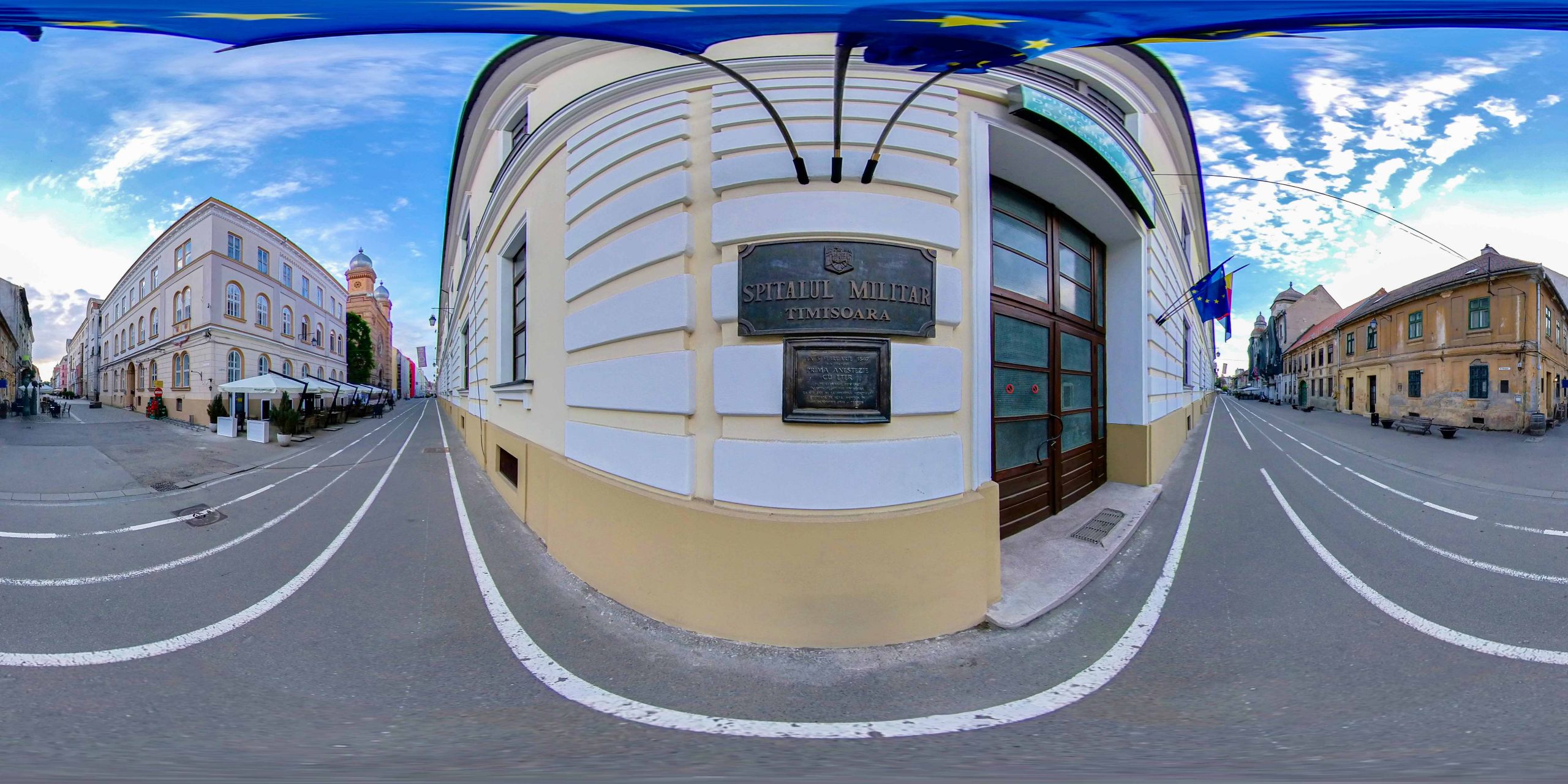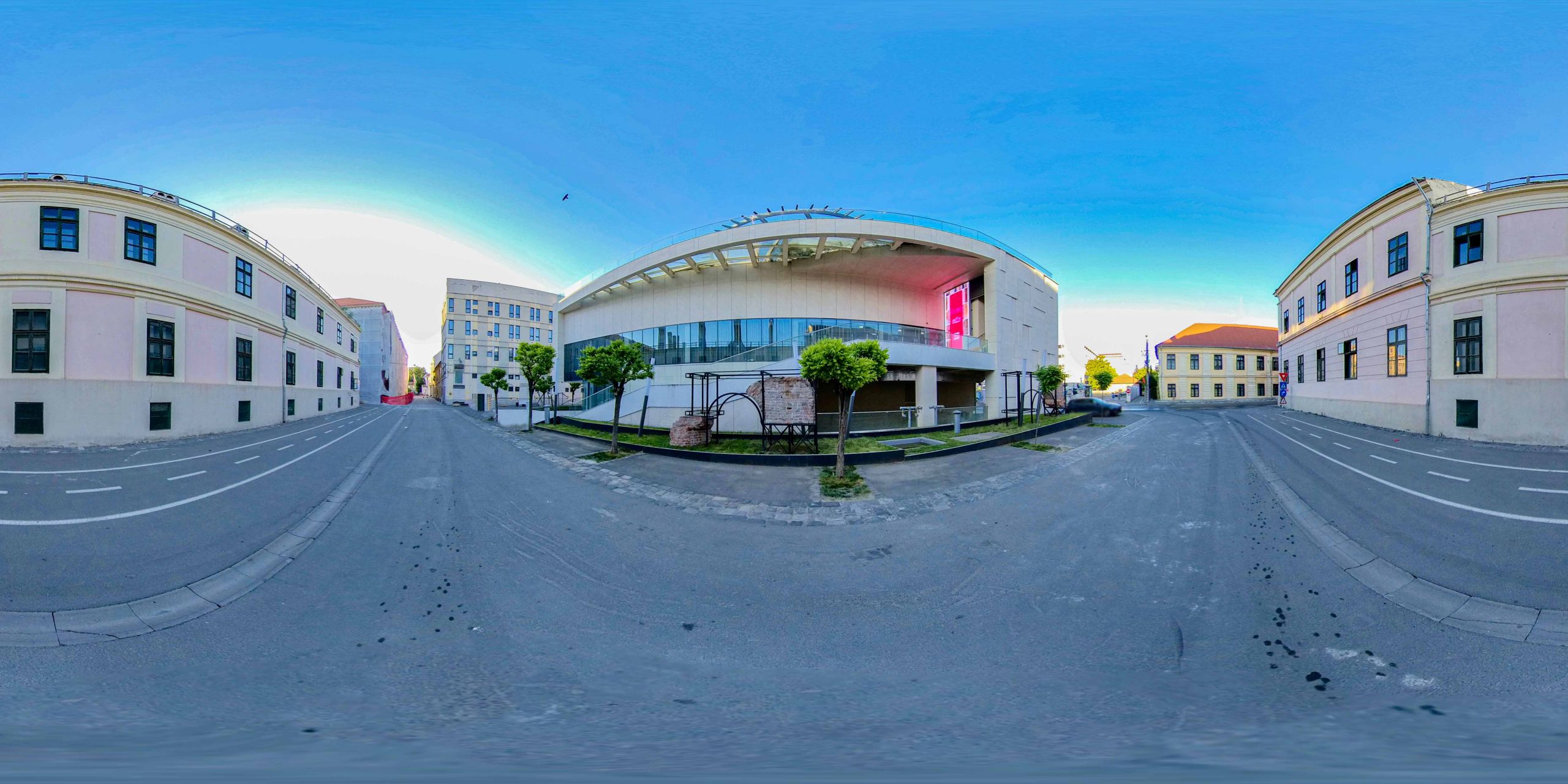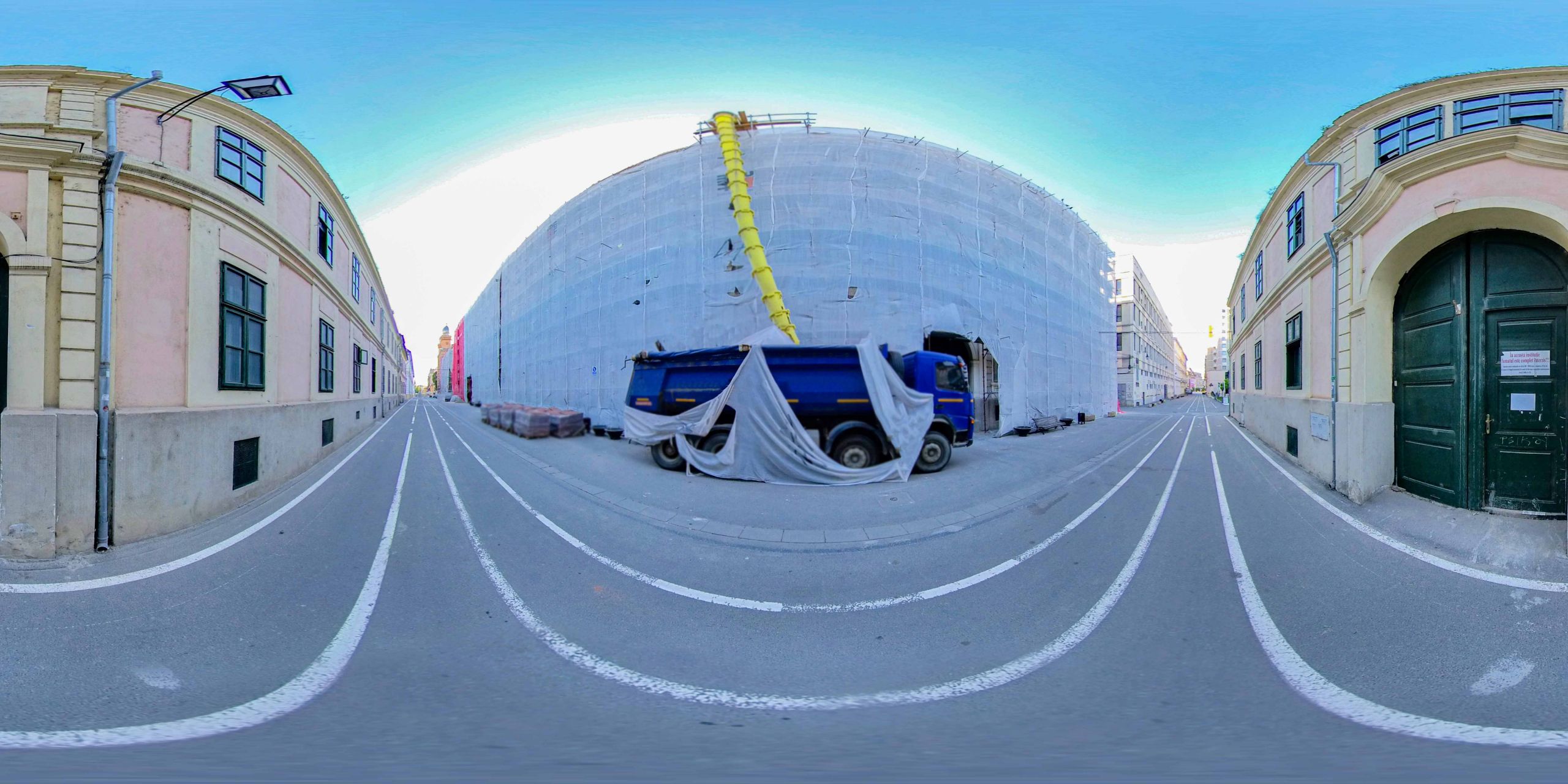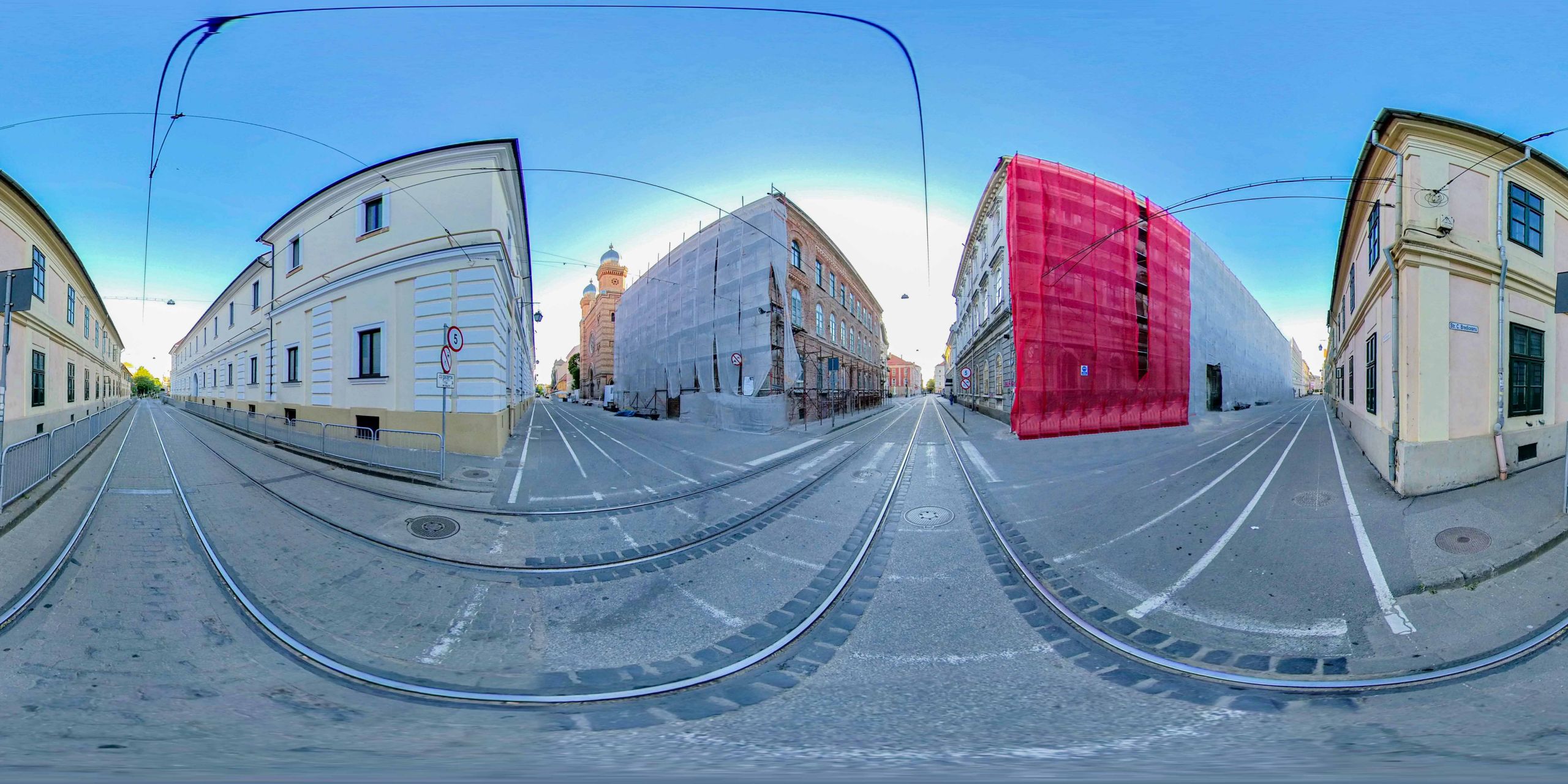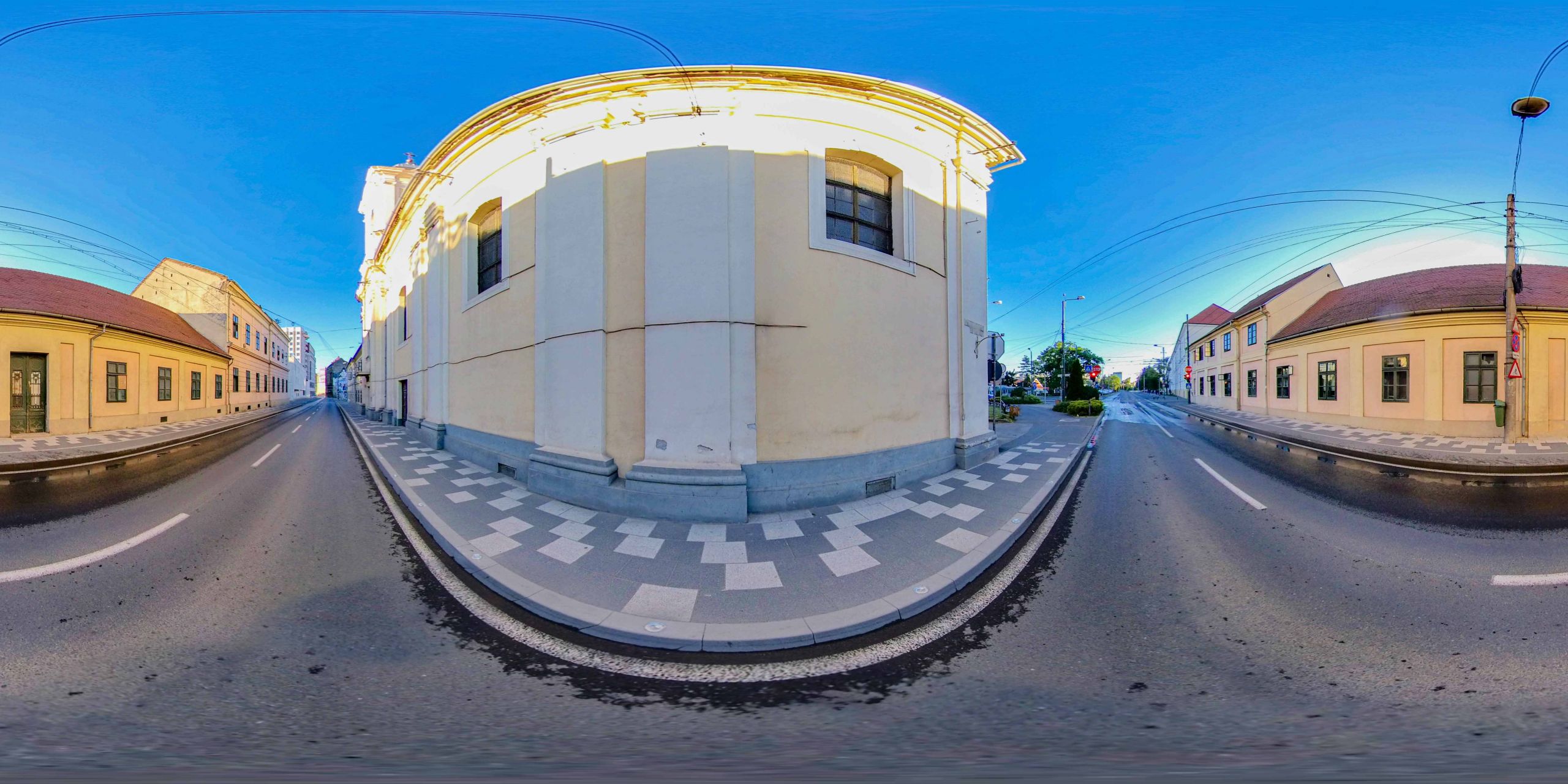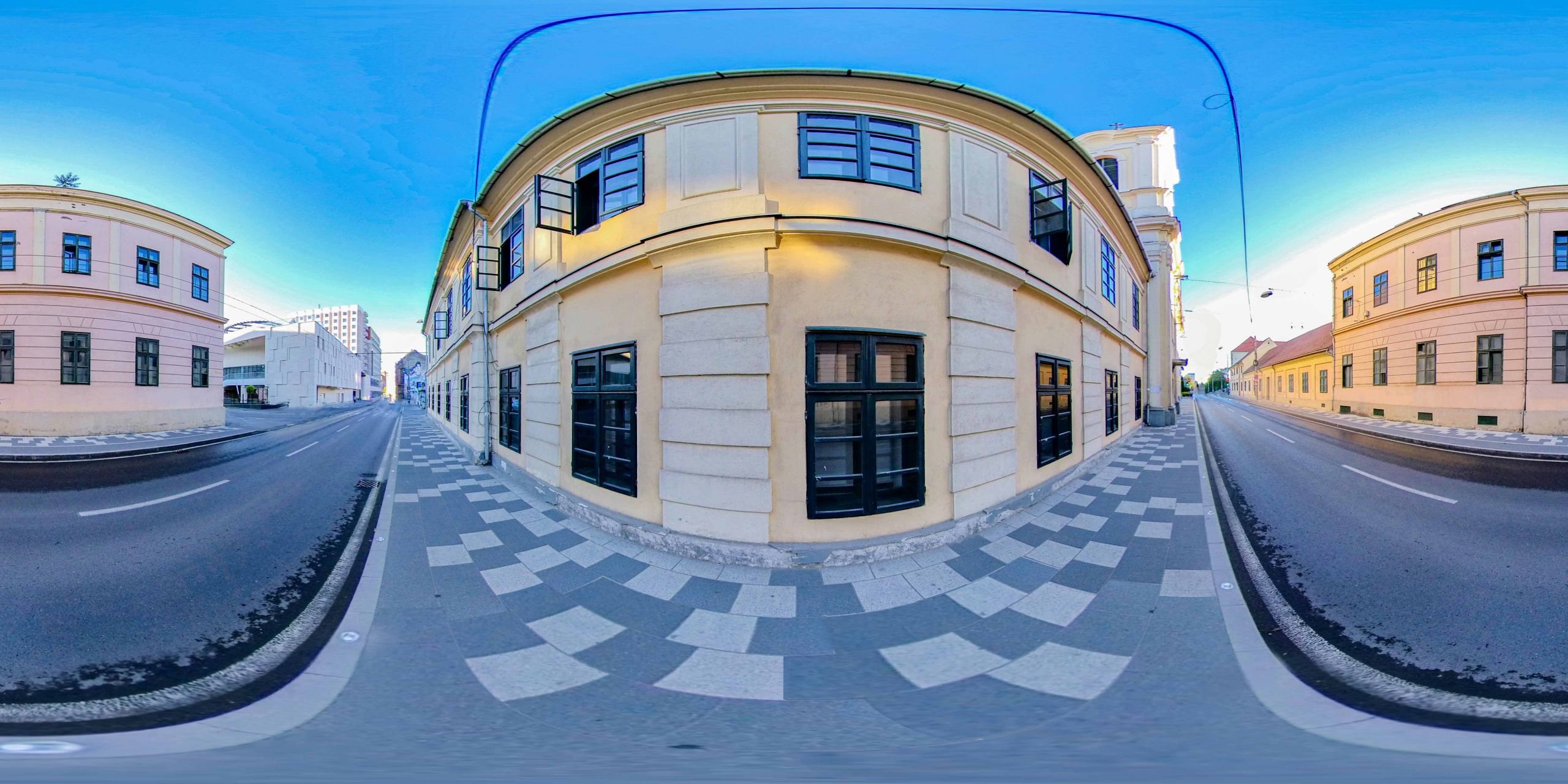The Municipal Emergency Clinical Hospital, originally called the Bürgerspital / Civil Hospital, was built between 1744 and 1745 in the provincial Baroque style. The military hospital was built on one level between 1764-1766 and multi-storey in 1817-1818.
Listen to the audio version.
The municipal emergency emergency (Str. Mărășești 3 - 5, Str. Sf. Ioan), originally called Bürgerspital / Civil Hospital, was built between 1744 and 1745, the wing of the building with the first floor facing Mărășești Street being finished in 1757, in the provincial baroque style. During the siege of the fortress by the Hungarian revolutionaries in 1849, the hospital was bombed and rebuilt in the mid-19th century. After World War II the building was used as the University Clinic of Dermato-Venerology until 2015.
The military hospital was built on one level between 1764-1766 and in 1817-1818 it became a multi-story hospital. The building suffered during the bombings of the Hungarian revolution in 1849, being renovated in 1894. The military hospital has three courtyards, with facades on four streets: Brediceanu, Gheorghe Dima, Gheorghe Lazăr, and Marasesti.
Bibliography:
Mihai Opriș, Mihai Botescu - Historic architecture in Timișoara Tempus Publishing House, Timisoara, 2014
Josef Geml, The old Timișoara in the last half of the century 1870-1920, Cosmopolitan Art Publishing House, Timișoara, 2016.
Military Hospital and former Civilian Hospital
Listen to the audio version.
Robert Șerban
at the entrance of the military hospital
whips the NATO flag
you look at it
and you heal
from fear
June 2022
“And not far from here, the hospital street began. Long, smelling of cetrimide and iodoform. All the hospitals – adult’s, military, children’s, women’s, dermatology and venereal diseases, even those for contagious diseases - were all lined up one after the other, in dull, damp buildings, with walls covered in mold. And at the end, in the last building, smaller and more isolated from the others - the morgue. And also in the city center, right between the sumptuous palace housing the National Bank and the courthouse, stood the prison. Several times a day, groups of prisoners in striped uniforms would pass through the huge, ugly wooden gate, accompanied by guards with dumb faces, like sleepy beasts.” (Radu Ciobanu, Twilight, București, Eminescu Publishing House, 1971, p. 16)
